I am getting the following exception:

I have gone through many posts here, here and here. But no post suggests proper solution to the problem. I want to know how can this situation be tackled practically.
My Models and Contexts are as follows:
public class Context : DbContext
{
public Context() : base("DefaultConnection")
{
}
public DbSet<Student> Students { get; set; }
public DbSet<Course> Courses { get; set; }
public DbSet<Staff> Staffs { get; set; }
}
public class Student
{
public int StudentId { get; set; }
public string FirstName { get; set; }
public string LastName { get; set; }
[Required]
public virtual Course Course { get; set; }
[Required]
public virtual Staff Staff { get; set; }
}
public class Staff
{
public int StaffId { get; set; }
public string Name { get; set; }
public string Contact { get; set; }
}
public class Course
{
public int CourseId { get; set; }
public string CourseName { get; set; }
[Required]
public virtual Staff Staff { get; set; }
}
I am getting this exception on the line :
context.Students.Add(student);
of the following code:
public void AddStudent()
{
Student student = new Student();
student.FirstName = "Bruce";
student.LastName = "Wayne";
student.Course = new Course();
student.Course.CourseName = "CSE";
student.Course.Staff = new Staff();
student.Course.Staff.Name = "Albert";
student.Course.Staff.Contact = "1234567890";
context.Students.Add(student);
context.Courses.Add(student.Course);
context.SaveChanges();
Console.WriteLine("Student , Course, Staff Added");
}